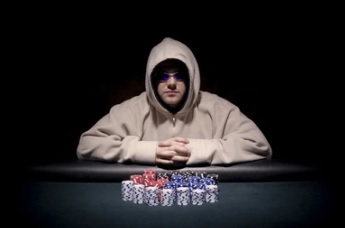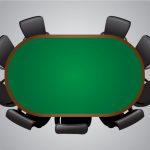Goal: to know the cards of your opponent.
If you can obtain that information (through legal and accepted means!), you are on your way to making a lot of money. The study of reading your opponent is a never ending endeavor, because making your reads is going to be different with every opponent. It’s a moving target: it depends on the player, on the mood of that player, on the table, on the location, and a hundred other variables.
At the same time, recognizing reads is very possible! Your brain is processing millions of pieces of information all day long, and the trick is to analyze and synthesize that information, not to create new information. I like to avoid using the term “making reads” and prefer the term “recognizing reads.” This is because your brain already has the information. You just need to extract it.
Here are 3 of my favorite exercises to help players tap into the host of information the brain is just waiting to give away:
- Host a running commentary in your head. As the hand plays out, comment on everything. Literally everything. “Player so-and-so raises 3 times the pot. Next player pushes all-in. Playing like he has kings.” This is information your brain is already storing. The difference here is that by commenting to yourself on it, constantly, all of that information is then flowing through the conscious mind. This creates an enormous opportunity for you: by bringing this information into the conscious mind, it can be analyzed and acted upon with reason, rather than subconscious feelings.
- After a fold, watch the players playing. How is he touching his chips? How is he touching is face? Why is he doing both of those things in this particular way? A particularly useful tactic is to pick just one player, and watch him for the duration of the hand from pre-flop to the showdown. Each street is a different situation, and in one hand, you can gain a fairly successful understanding of your opponent. These reads are going to be more accurate than the reads you make during a hand, since you do not have anything at stake.
- After a fold, watch players socializing. What body parts does he use to be expressive in conversation? Hand waving? Well if it’s hand waving, guess what part of his body is going to be the most expressive when he has something valuable to hide (monster hand) or something toxic to hide (bluffing hand)? Also look for facial expressions: is his mouth what’s communicating most of the emotion in his conversation? Well, if so, guess what part of his body will be most expressive when he is feeling emotions during the card game?
You know all those subconscious feelings or gut instincts you get, that are telling you how to act with a fundamental conviction? This doesn’t come from nowhere: it comes from your subconscious brain processing loads of information to great for the conscious brain, and coming back with an answer, i.e. an instructive feeling. As a poker player, perhaps the most lucrative thing you will ever do, is learn to tap into that, and learn to bring portions of it up into the conscious mind.
Submit your review | |







